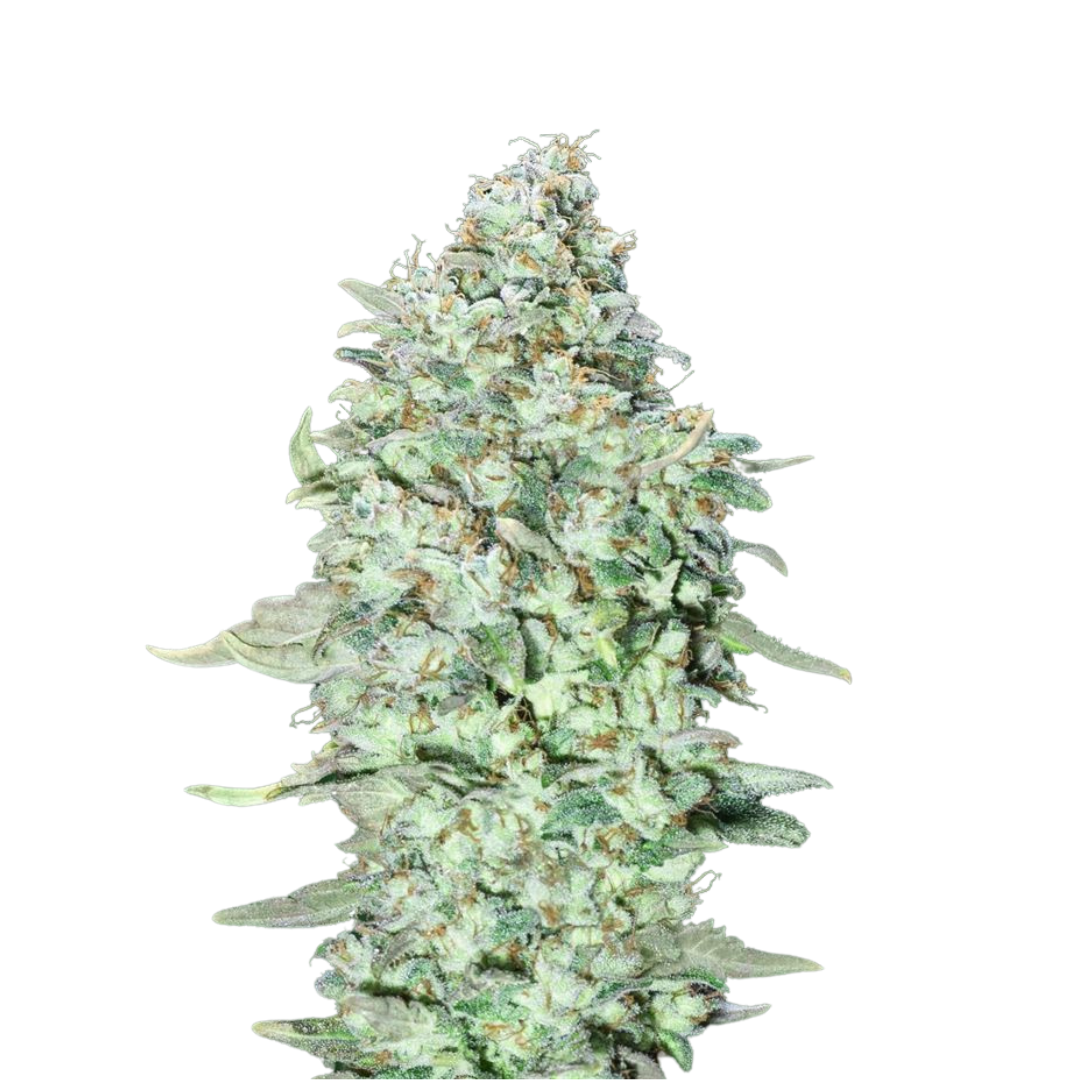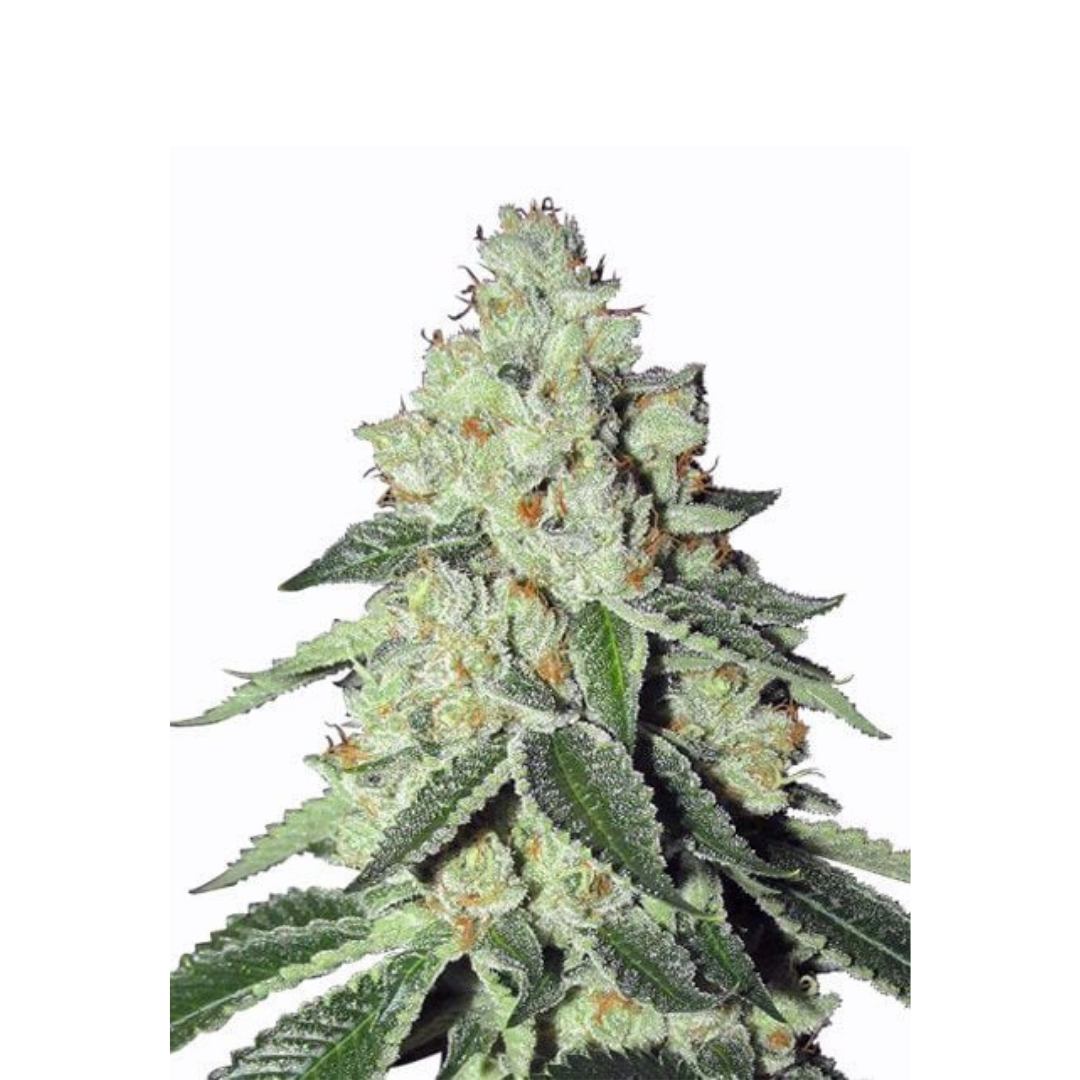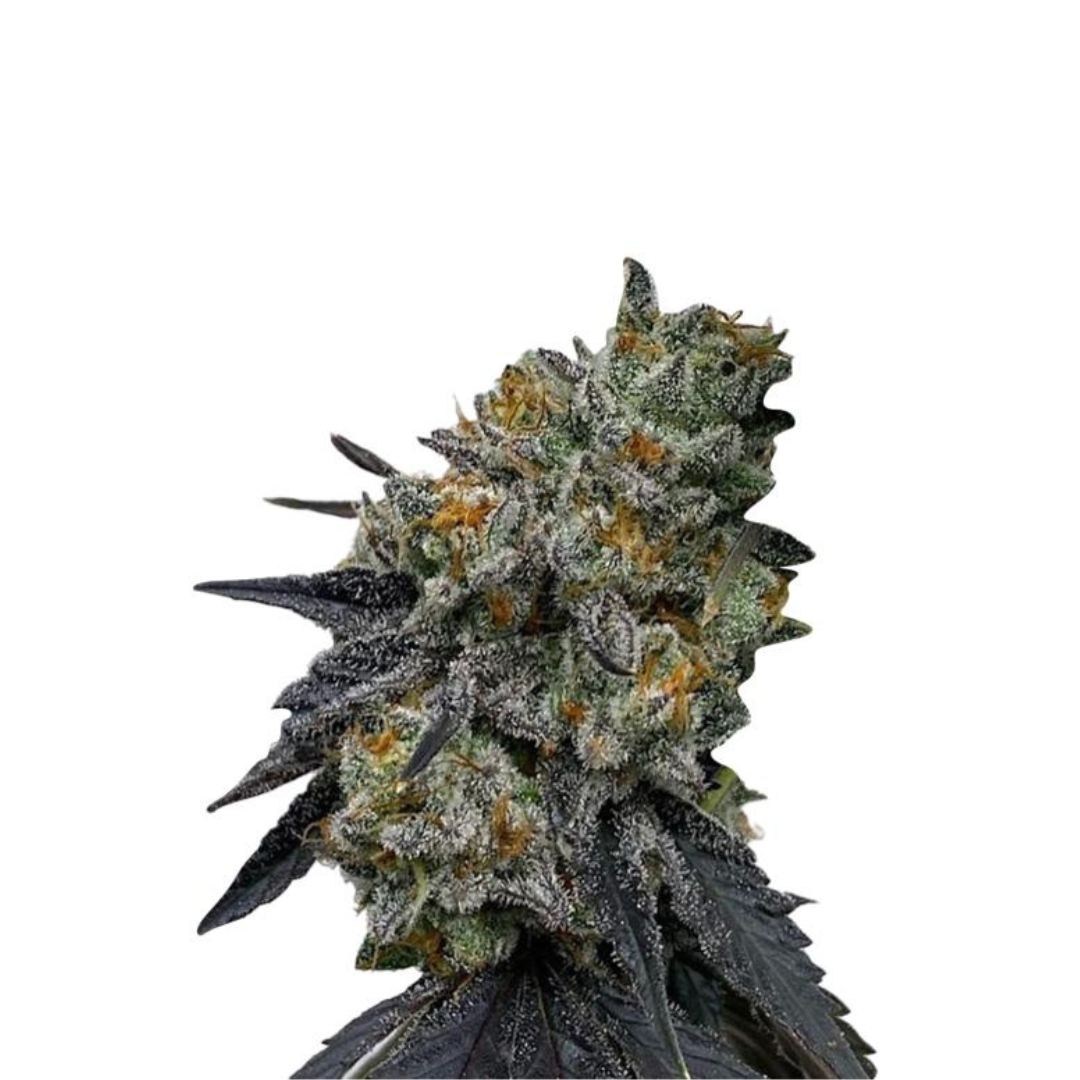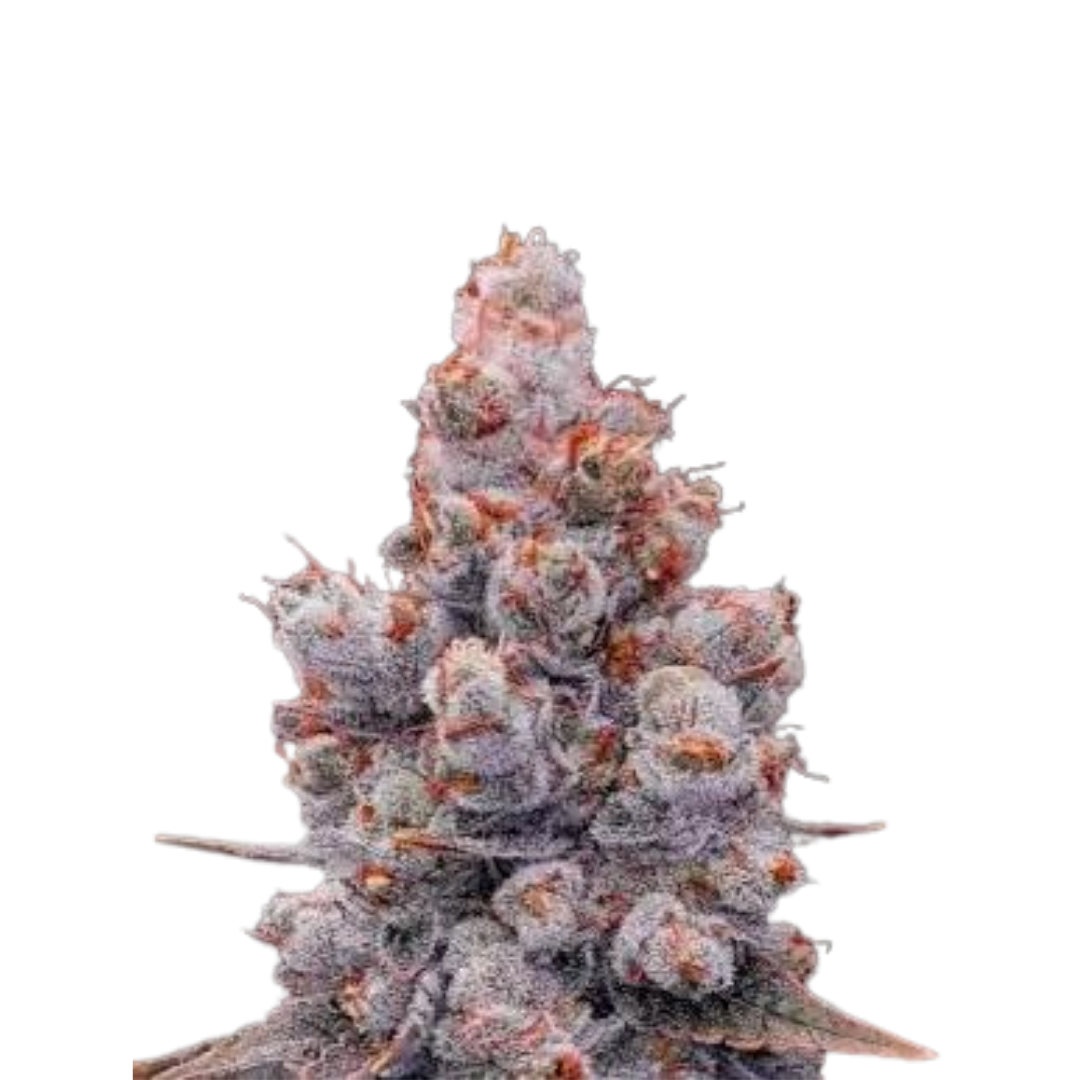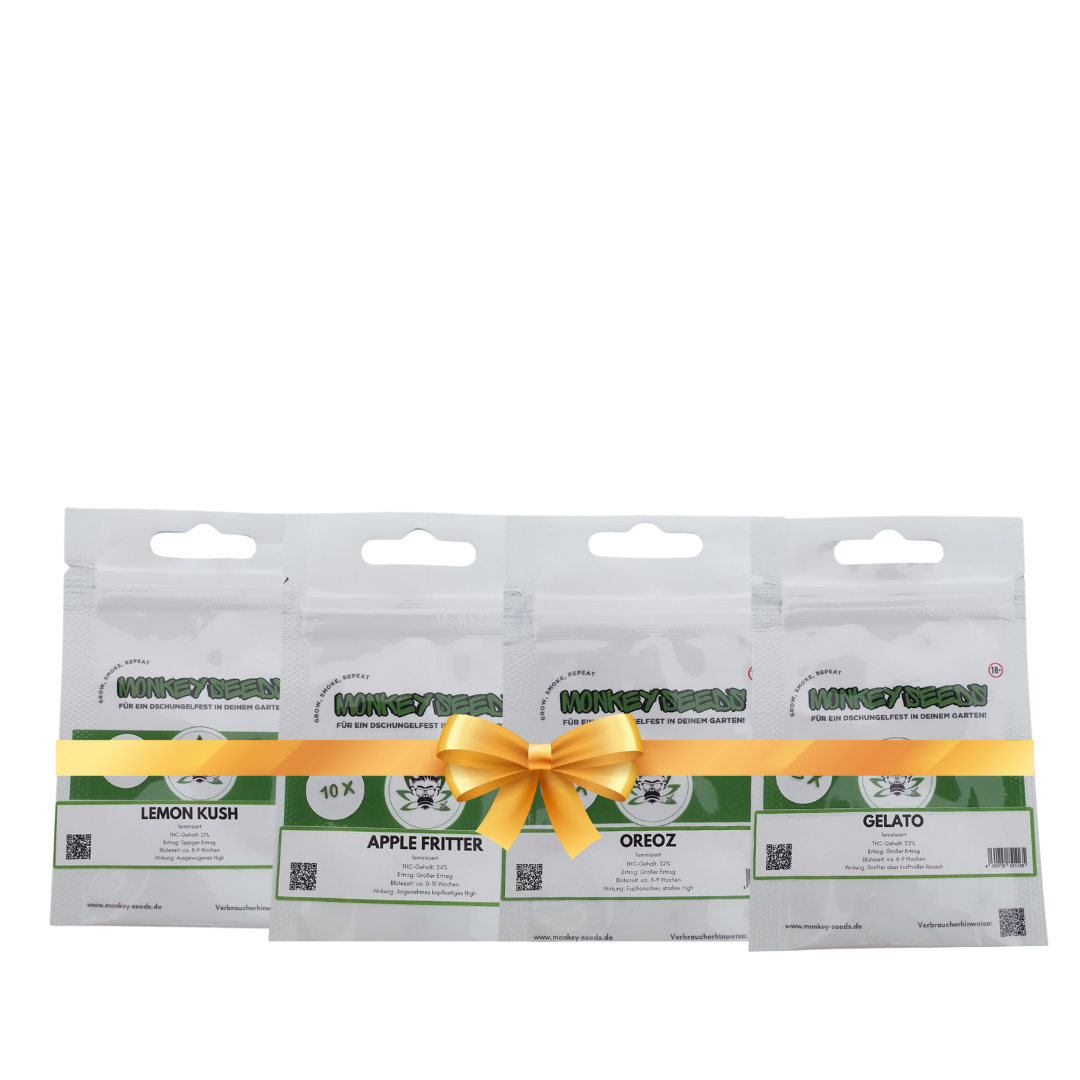How and when to repot cannabis seedlings
The seedling stage marks perhaps the most important part of the entire cannabis life cycle. Whether you're growing from seeds or clones, the active part of growing begins with the seedlings. Transplanting is crucial. One mistake here and the plants could be lost. However, if you do everything right, you can grow great ganja with this guide.
The optimal conditions for seedlings
Cannabis seedlings require gentle handling. Take care of your cannabis plants like babies. If the seedlings need support, you can prop them up with a toothpick or cocktail stick and some soft garden wire.
Most growers prefer an 18:6 lighting cycle as optimal. White light is preferred. Energy saving bulbs, MH lamps or LED lamps are suitable as a light source. However, if you have a sunny windowsill, this can also be sufficient in a pinch.
The importance of the right light cycle for seedlings
Roots grow in the dark, so we recommend an 18:6 or 20:4 cycle over a continuous 24-hour light cycle. High humidity, ideally around 70%, and temperatures in the range of 20-24°C create an optimal habitat for seedlings. To control these parameters, a greenhouse, thermo-/hygrometer and a water mist are essential tools.
If your seedlings are stretching or growing floppy, it could be due to genetics. However, it often indicates that the grow light is positioned too far from the canopy. A cool white 250W CFL can easily hang about 6 inches above a dozen or more seedlings without burning the leaves.
When your seedlings enter the actual vegetative stage, we recommend using LED lights as they are inexpensive and produce little heat. For best results, grow your seedlings under an 18/6 light cycle with blue spectrum CFL lights for the first 10-14 days. Once they have developed healthy, true leaves, you can grow them under stronger HID or LED lights to begin the vegetative stage. Hang the LED lights about 12-18 inches above the canopy initially, and adjust the spacing to about 18 inches during the late vegetative and flowering stages.
Choosing the best substrate for cultivation
The growing medium should be moist but not waterlogged. An effective wet-dry cycle is the goal. It is important to resist the temptation to water too much. If you are unsure, it is better to mist the plants with a mister. Touch the growing medium to feel how dry it is and keep the humidity high.
Before we get into the details, we need to make it clear that starting with one growing medium and then switching to another can be dangerous, so keep it simple and consistent. You can't start seedlings in soil and then transplant them into a bucket for deep water culture (DWC).
Germination kits
Germination kits are available on the market that offer high-quality soil with beneficial bacteria and are easy to handle. They create an ideal environment for the early growth stages of cannabis seedlings. These kits encourage the development of an aerated soil, which is crucial for the formation of young roots, and simplify the transplanting process as the seedlings mature.
Royal Queen Seeds Starter Kit
The Royal Queen Seeds Starter Kit features easy-start pots and beneficial bacteria to improve the germination rate of your seeds. It also includes a propagator that maintains high humidity - a crucial factor for successful cannabis seed germination. The pots are compact yet easy to handle and remove, allowing for seamless transplanting.
Soil plug
Coconut fiber is great for germinating cannabis seeds because it has a high transpiration rate that prevents waterlogging. However, it lacks nutrients. Once you have successfully completed germination and obtained healthy seedlings, it is important to repot them immediately because they will soon require additional nutrients.
Geotextile plant pots
Our geotextile plant pots are specially designed for optimal plant growth. They ensure excellent ventilation and drainage and are available in three sizes (5, 8 and 11 litres) that are perfect for growing and repotting. Equipped with a Velcro closure, they allow easy access for gentle removal of soil and plants, eliminating the need for digging.
Cubes, plastic cups and small containers
Rockwool cubes and blocks are designed specifically for hydroponic growers. Start your seedlings in a small cube and transplanting later will be a breeze. Simply cut a cube-sized piece from a larger block and place the seedling inside. This process can be repeated with minimal stress to the plants.
However, rockwool is not a good choice for earth builders, even in the form of small blocks. The block retains more water than the surrounding earth, which can soon lead to green, muddy algae growth. While it can sometimes work with the tiny cubes, why take the risk?
An oxygen-rich growing medium with good drainage is ideal for soil and/or coco growers. During the seedling stage, there are many similarities between these two growing methods. Peat or coco cubes are easy to handle and relatively inexpensive. Similar to a rockwool block, you can visually monitor the development of the roots as the white spaghetti strands protrude from the cube. Both organic and hydroponic growers working with clones report the best success rates using these cube-sized starter media.
Many soil farmers and coco growers use cups or small plastic pots as starting containers, typically 0.5-1 liter in size. Lightly pre-fertilized soil mixed with perlite or coco coir mixed with 30-50% perlite are the most common seedling mixes. As long as the bottom of the container has adequate drainage holes and the interior can accommodate the volume of substrate needed, it can serve as a starting pot. Don't be afraid to improvise. A few holes poked in the bottom of a paper cup and it becomes a pot.
You may also come across what is known as the plastic cup method. This is basically the same approach; just using a plastic cup as a container for the seedlings. However, the seedling will need to be repotted later. Fortunately, the bottom of the cup can be carefully cut off, making it easier to move to a larger pot!
The advantages? It is inexpensive, easily available and requires only small holes in the soil to avoid waterlogging.
When to transplant cannabis seedlings
The best time to transplant seedlings is when they outgrow their current container. With cubes, you can see the roots poking out, which is a signal that it's time to transplant. If you're starting with a cup or small pot, look for above-ground clues. When the seedling's pair or pairs of true leaves have spread enough to cover the circumference of the container, it's usually time. Noticeable vertical growth is also a sign.
Don't wait too long to transplant. Plants with tangled roots will need time to recover and may be permanently stunted. Generally, it takes 7-10 days for a seedling to take root and grow out of smaller starting pots of 1 litre or less.
If you use the products mentioned above (starter kit, seed cubes or a plastic/paper cup), you should take their characteristics into account. Seed cubes are very small, which means you have to transplant your seedlings in time, otherwise they might start to leg. Soil plugs offer a little more room for root development due to their larger size, although they lack nutrients. With a plastic cup, you have a little more flexibility and can wait to transplant until the seedling has about three pairs of true leaves.
How to transplant seedlings
Transplanting seedlings is relatively easy, but the exact procedure depends on what medium you grew them in. Here are instructions for transplanting seedlings from different growing methods:
- Starter Kit: After your seedlings have germinated and developed cotyledons, carefully transplant them into a larger pot with your preferred substrate. Make sure the first true leaves are above the soil to prevent disease.
- Soil plug: Make a hole in your new substrate that is just the right size for the soil plug and carefully place it in. Make sure the seedling is upright and stable.
- Plastic cups: When the roots start to protrude from the drainage holes of the cup, it's time to transplant them into a larger container or their final substrate. Gently tip the cup over and use your fingers to push the seedling out of the cup. Then place it in the larger pot and cover the roots with soil.
- Coconut fiber: Drill a hole in the moistened coconut fiber and carefully plant the seedling, being careful not to damage the roots. Coconut fiber requires frequent, light watering with additional nutrients.
- Rockwool (hydroponics): Depending on the configuration of your system, transplant the rockwool cube into a larger pot with a different growing medium or into a hydroponic system.
- Geotextile Plant Pots: Open the pot's Velcro closure and transplant the seedling into its final substrate once it has developed into a seedling. If you notice stunted growth, this could be an indication that the plants need to be transplanted.
What to do after transplanting?
After transplanting, the next steps are crucial for the well-being and healthy growth of your seedlings. Here are some detailed tips to help them successfully adapt to their new environment:
- Watering schedule: After transplanting, water your seedlings thoroughly to ensure the substrate settles well around their roots. Be sure to avoid waterlogging by distributing the water evenly and allowing excess water to drain away. Then keep the substrate evenly moist, but not soggy.
- Adjusting lighting: Adjust lighting after transplanting to avoid stress and light burn. Make sure the light source is adequate but not overly bright. LED lights work well for seedlings. A light cycle of 18 hours light and 6 hours dark is recommended.
- Care: Continue to monitor the temperature, humidity and air circulation around your seedlings. Watch for signs of stress, nutrient deficiencies, pests or disease and take steps to combat these problems as needed.
- Support: Some seedlings may need additional support to stand upright and develop properly. Use stakes, trellises or other support structures to give them support if necessary.
- Acclimatization: When you plan to move your seedlings outdoors, gradually acclimate them to the new conditions by gradually exposing them to sunlight and outdoor temperatures. This process, known as hardening off, reduces the shock of sudden changes and helps the plants adapt to outdoor conditions.
Transplanting vs. direct sowing in large pots
The decision between transplanting and sowing directly into large pots depends on several factors. If your final growing pot holds up to 11 liters, you may consider sowing the seeds directly into it, especially if you are growing from seed. However, clones will not be able to take root in such a large container. It is important to note that seedlings in large pots may initially grow more slowly than those in smaller pots, but this difference will be insignificant after a few weeks of vegetative growth.
If you choose not to transplant, you eliminate the risk of transplant shock, but you could also limit the potential of your cannabis plants. In some cases, especially with autoflowering strains with a short life cycle, a single transplant may be the best option.
It should be noted, however, that larger plants are generally more beneficial unless space constraints require smaller specimens. Transplanting is an important cannabis cultivation skill that beginners should not necessarily avoid. It is a skill that is learned through experience, and if you ever want to grow large cannabis plants, you must learn to successfully transplant seedlings.

